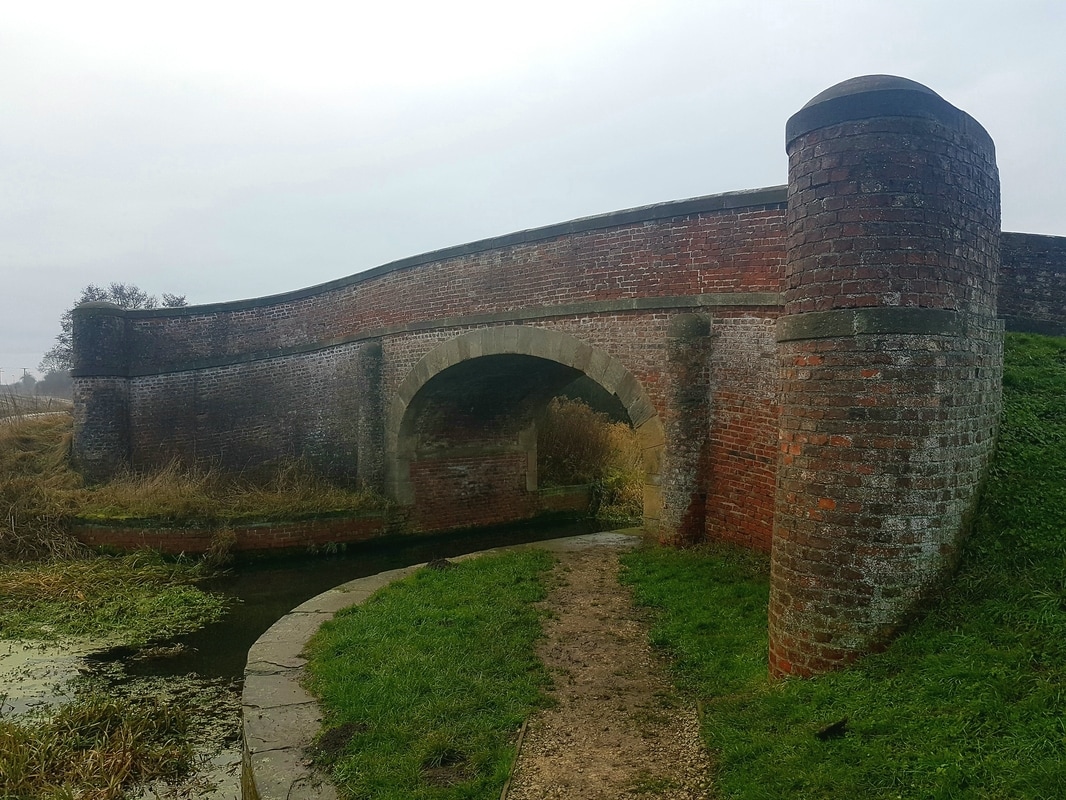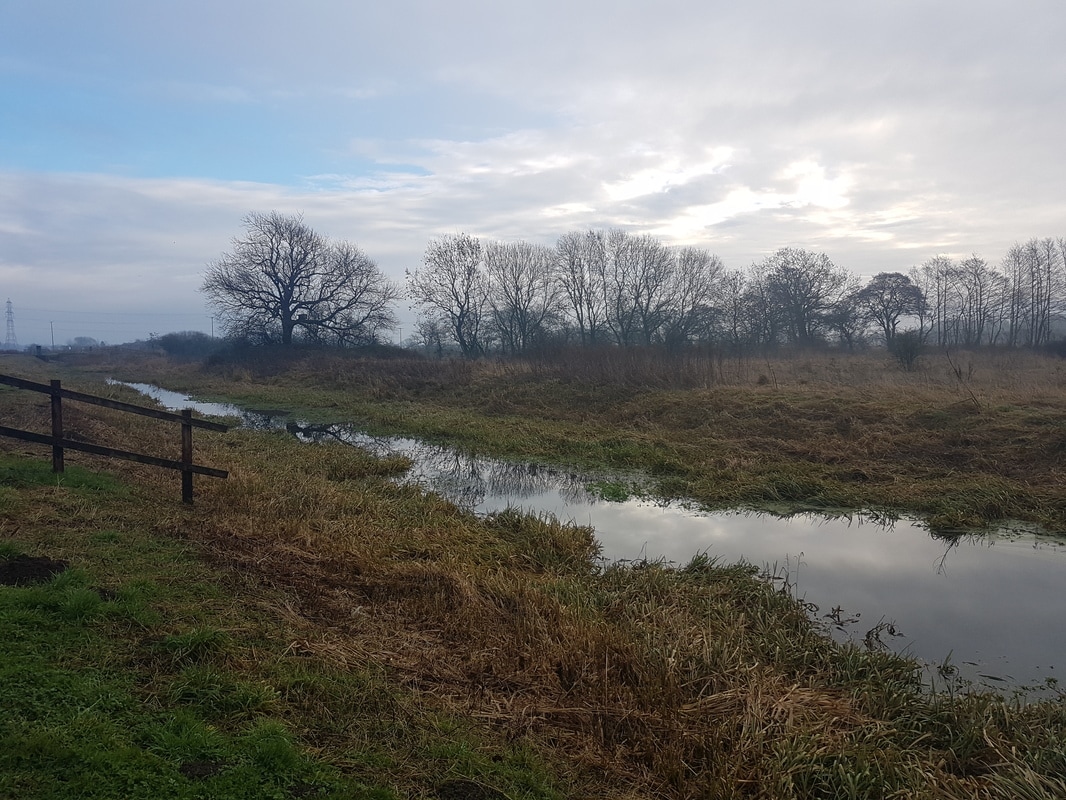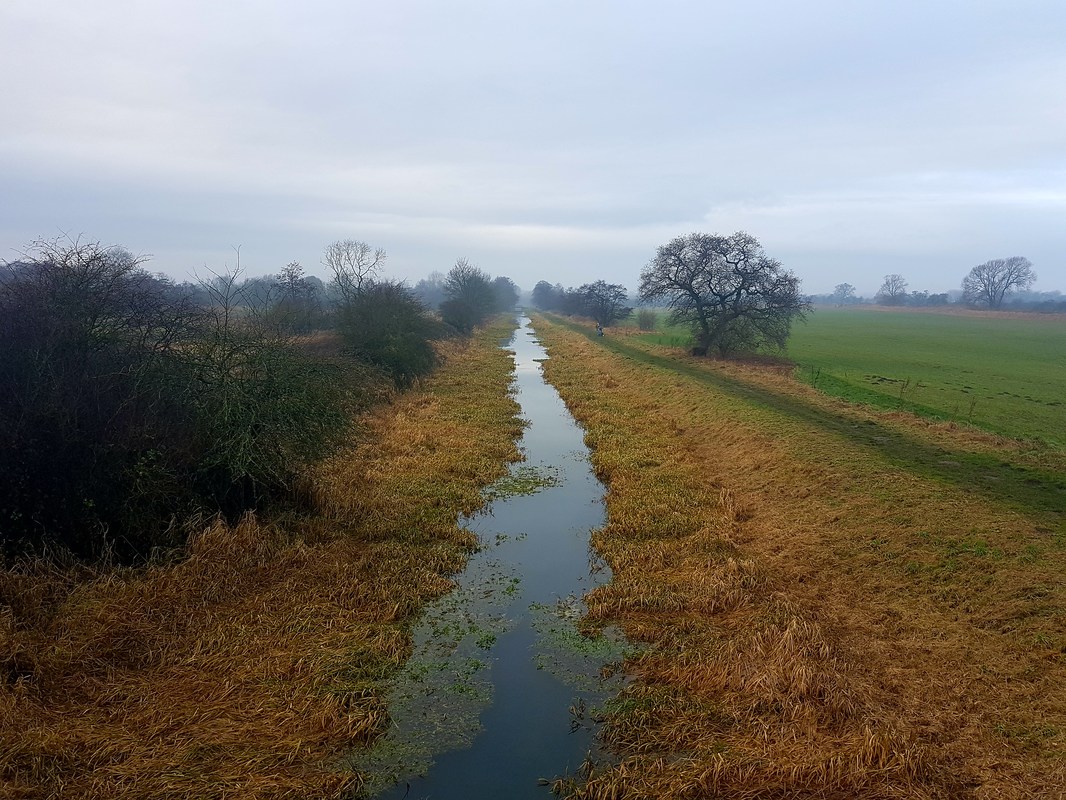The top photograph is of one of the bridges crossing the canal. This carries Church Lane which connects the villages of Melbourne and Thornton over the canal. The other pictures were taken from the bridge.
A second assessment of the project was made in 1767 and a third in 1771 at which time the Pocklington Branch had been dropped. In 1777 a new plan for a canal from the River Derwent to Pocklington was considered and approved but no further action was taken.
Further debate occurred in 1801 and a number of routes were surveyed but again the plan was dropped
Finally, in 1812 Earl Fitzwilliam employed George Leather Jr. to survey a proposed route. At the time, both Leather and his father were working for the Earl on a navigation and drainage scheme for the upper River Derwent.
The suggested route started at Sutton Lock on the River Derwent but Leather found this route to be problematic and proposed an alternative route. He started surveying in 1813 but became il, and the work was not completed until June 1814.
A Bill was put before Parliament which became an Act on 25 May 1815. This authorised the newly formed Pocklington Canal Company to raise £32,000 by issuing shares and £10,000 by subscriptions from the shareholders or by mortgaging the works. A management committee was elected at a shareholders meeting held on 19 June 1815 and all the money had been pledged by 7 July 1815. Leather acted as engineer during the construction work
The canal was started from the Derwent end, so that sections could be brought into use as they were completed. Bad weather prevented Leather from completing the work by the end of 1817 as originally planned and the canal eventually fully opened on 30 July 1818.
The canal was sized to allow vessels known as Humber Keels which operated on the River Derwent to use it.
The Humber Keel was a type of sail craft used for inshore and inland cargo transport on the Humber Estuary and surrounding rivers and waterways during the late 19th and early 20th centuries. Keels were constructed to a variety of sizes. They had strongly built hulls with a bluff bow, were steered by a tiller, and were designed to work in shallow waters so that they could be used on the inland waterways connected to the River Humber. By the 19th century most of the hulls were built of oak, and the design was later copied by steel replacements. In the 20th century, steam and diesel engines replaced sail and with grants available to convert sailing vessels to mechanical power all of the sailing keels had disappeared by 1949. One advantage of the design was the ability to sail very close to the wind which was essential on the narrow waterways on which they plied. They were also very manoeuvrable and a single person could handle one on narrow and quiet waters. Stability was aided by a huge pair of leeboards since the vessels did not have a central keel and the small topsail was used when they were navigating the canals and rivers.
The canal rises by around 31m as it travels the 9.5 miles from the River Derwent to Pocklington. Pocklington Beck supplies most of the water for the canal. The paddle gear on the locks was fitted with fixed handles when the canal opened but these were replaced by removable ones after incidents where the locks were emptied by unauthorised people. A house was built for the lock-keeper and collector of tolls and Mark Swann was appointed to the post. The house was located close to the top lock.
Tolls raised just £623 in 1820 as there was competition from goods travelling by road. However in 1822 a packet boat was bought as a joint venture by several tradesmen and a weekly service to Hull began. Traffic consisted of coal, lime, manure and general merchandise travelling up the canal to Pocklington, while corn, flour and timber traveled in the opposite direction. Traffic rose gradually during the 1820s, and in 1830 a dividend of 3 per cent was paid to shareholders. Average receipts from tolls were around £1,400 per year, which allowed the dividend to be around 3 per cent until the late 1840s.
In 1848 the York and North Midland Railway bought the canal for £17,980. To minimise costs little more than token maintenance was carried out by the railway company. In May 1850, Swann, who had been collecting tolls since the canal opened, was dismissed. (When I read this I felt quite sad, the poor guy had worked and lived on the canal for 32 years. I hope he was okay and found somewhere else to live and work although with the downturn in traffic he was probably not surprised and hopefully was prepared). Locks were repaired in 1851, after which the railway company received a suggestion from landowners that the canal should become a drainage ditch, with a tramway running along the bank for the carriage of goods. Although the idea was well received, no further action was taken. When the York and North Midland Railway was taken over by the North Eastern Railway in 1854 the new owners of the canal followed a similar policy of low maintenance. Traffic declined from 5,721 tons in 1858 to 901 tons in 1892, by which time most boats terminated at Melbourne near to where I took my photograph and could only be partially loaded due to the channel being badly silted.
Despite the difficulties, trade on the canal continued until 1932 and the canal remained passable until 1934.



 RSS Feed
RSS Feed
